Ab interno trabecular bypass surgery with Trabectome for open-angle glaucoma
- PMID: 33580495
- PMCID: PMC8094917
- DOI: 10.1002/14651858.CD011693.pub3
Ab interno trabecular bypass surgery with Trabectome for open-angle glaucoma
Abstract
Background: Glaucoma is the leading cause of irreversible blindness. Minimally invasive surgical techniques, such as ab interno trabecular bypass surgery, have been introduced to prevent glaucoma from progressing. OBJECTIVES: In light of the potential benefits for people with open-angle glaucoma and the widespread uptake of the technique, it is important to critically evaluate the evidence for whether treatment with ab interno trabecular bypass surgery with Trabectome is both efficacious and safe.
Search methods: We searched the Cochrane Central Register of Controlled Trials (CENTRAL; which contains the Cochrane Eyes and Vision Trials Register; 2020, Issue 7); Ovid MEDLINE; Ovid Embase; the ISRCTN registry; ClinicalTrials.gov and the WHO ICTRP. The date of the search was 17 July 2020.
Selection criteria: We searched for randomised controlled trials (RCTs) of ab interno trabecular bypass surgery with Trabectome compared to other surgical treatments (other minimally invasive glaucoma device techniques, trabeculectomy), laser treatment, or medical treatment. We also included trials in which these devices were combined with phacoemulsification compared to phacoemulsification in combination with other glaucoma surgery or alone.
Data collection and analysis: We used the standard methodological procedures expected by Cochrane. Our primary outcome was proportion of participants who were medication-free (not using eye drops). Secondary outcomes included mean change in intraocular pressure (IOP), proportion of participants who required further glaucoma surgery, mean change in quality of life, proportion of participants who achieved an IOP of 21 mmHg or less, 17 mmHg or less, or 14 mmHg or less and rate of visual field progression. Adverse effects were the proportion of participants experiencing intra- and postoperative complications. All outcomes were measured in the short term (6 to 18 months), medium term (18 to 36 months), and long term (36 months or longer).
Main results: In this update, we included one RCT which had previously been identified as an ongoing study in our 2016 publication. This trial was a single-centre, single-surgeon RCT set in Canada with 19 participants. Participants were adults who had open-angle glaucoma, open angles, and had inadequately controlled IOP that required surgical intervention. The study was terminated before the intended sample size was reached 'due to slow recruitment and increasing lack of clinical equipoise over time'. This reduced the power of the study to detect clinically important effects. We assessed the trial as being at high risk of attrition, reporting, and other potential sources of biases. The risks of performance and detection bias are unclear. The intervention group of 10 people had Trabectome ab interno trabeculotomy combined with cataract extraction (phaco-AIT) and the comparator group of 9 people had trabeculectomy with mitomycin C combined with cataract extraction (phaco-Trab), one of whom was lost to follow-up. Seven of 10 participants in the phaco-AIT group and 4 of 8 in the phaco-Trab group were medication-free (not using drops) at 12 months (odds ratio (OR) 2.33, 95% confidence interval (CI) 0.34 to 16.2; very low-certainty evidence). At 12 months, the mean change in IOP was worse for phaco-AIT than for phaco-Trab, but this evidence was very uncertain (mean difference (MD) 3.70 mmHg, 95% CI -1.44 to 8.84; very low-certainty evidence) in the phaco-AIT group, as was the difference in the mean number of IOP-lowering drops taken per day (MD -0.41, 95% CI -1.22 to 0.40; very low-certainty evidence). Only one participant in the phaco-AIT group required further glaucoma surgery. The study protocol declared that quality of life and visual field progression were measured, but they were not reported All 8 participants with complete data in the phaco-Trab group and 8 of 10 in the phaco-AIT had at least one early or late postoperative complication (e.g. day 1 IOP spike, hypotony, choroidal effusion, bleb leak or encapsulation, uveitis, or peripheral anterior synechiae). The evidence was very low-certainty due to high risk of bias for several domains for this study and for large imprecision of all estimates. We also identified one ongoing study, identified from the International Clinical Trials Registry Platform (ICTRP): a multicentre, open, RCT comparing Trabectome to ab interno trabeculectomy using microhook. The study investigators plan to recruit 120 adults between 20 and 90 years of age. The primary outcome is duration of treatment success. Secondary outcomes include postoperative IOP, number of anti-glaucoma medications, and adverse events.
Authors' conclusions: There is currently no high-quality evidence for the outcomes of ab interno trabecular bypass surgery with Trabectome for open-angle glaucoma. Properly designed RCTs are needed to assess the long-term efficacy and safety of this technique.
Trial registration: ClinicalTrials.gov NCT00901108.
Copyright © 2021 The Cochrane Collaboration. Published by John Wiley & Sons, Ltd.
Conflict of interest statement
The review authors are seeking funding to address the subject of this review.
KH has performed Trabectome surgery. He has delivered a lecture entitled "Constructing clinical trials for MIGS ‐ the lack of evidence and what to do about it" at the Moorfields International Glaucoma Symposium 2016. The Symposium was sponsored by Laboratoires Thea, which contributed an educational grant to Moorfields Eye Hospital. AS: none known GV: none known CB: none known GG has in the last five years received travel funding and his host organisation has received both educational and unrestricted research funding from pharmaceutical and equipment manufacturers that are involved in the treatment of glaucoma but none that are otherwise related to (or competing with) the subject of this review.
Figures

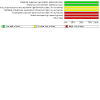



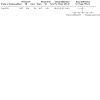


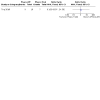
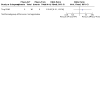
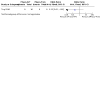
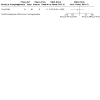

Update of
-
Ab interno trabecular bypass surgery with Trabectome for open angle glaucoma.Cochrane Database Syst Rev. 2016 Aug 15;(8):CD011693. doi: 10.1002/14651858.CD011693.pub2. Cochrane Database Syst Rev. 2016. Update in: Cochrane Database Syst Rev. 2021 Feb 4;2:CD011693. doi: 10.1002/14651858.CD011693.pub3. PMID: 27526051 Free PMC article. Updated.
References
References to studies included in this review
Ting 2018 {published data only}
-
- Ting JL, Rudnisky CJ, Damji KF. Prospective randomized controlled trial of phaco-trabectome versus phaco-trabeculectomy in patients with open angle glaucoma. Canadian Journal of Ophthalmology 2018;53(6):588-94. - PubMed
References to studies excluded from this review
NCT03894631 {published data only}
-
- NCT03894631. Effect of intra-subject phaco/trabectome vs. phaco/kahook dual blade on intraocular pressure. clinicaltrials.gov/ct2/show/NCT03894631 (first received 28 March 2019).
References to ongoing studies
JPRN‐UMIN000030167 {published data only}
-
- JPRN-UMIN000030167. Trabectome versus microhook ab interno trabeculotomy comparative study (TramTrac Study) [A multicenter, randomized, trial to test non-inferiority of microhook ab interno trabeculotomy against Trabectome for an intraocular pressure lowering effect and safety]. upload.umin.ac.jp/cgi-open-bin/ctr_e/ctr_view.cgi?recptno=R000032738 (registered date 27 November 2017).
Additional references
AGIS 2000
-
- Anonymous. The Advanced Glaucoma Intervention Study (AGIS): 7. The relationship between control of intraocular pressure and visual field deterioration. The AGIS Investigators. American Journal of Ophthalmology 2000;130(4):429-40. - PubMed
Burr 2007
-
- Burr JM, Mowatt G, Hernandez R, Siddiqui MA, Cook J, Lourenco T, et al. The clinical effectiveness and cost-effectiveness of screening for open angle glaucoma: a systematic review and economic evaluation. Health Technology Assessment 2007;11(41):iii-iv, ix-x, 1-190. - PubMed
CNTG Study Group 1998
-
- Anonymous. Comparison of glaucomatous progression between untreated patients with normal-tension glaucoma and patients with therapeutically reduced intraocular pressures. Collaborative Normal-Tension Glaucoma Study Group. American Journal of Ophthalmology 1998;126(4):487-97. - PubMed
Francis 2006
-
- Francis BA, See RF, Rao NA, Minckler DS, Baerveldt G. Ab interno trabeculectomy: development of a novel device (Trabectome) and surgery for open-angle glaucoma. Journal of Glaucoma 2006;15(1):68-73. - PubMed
Francis 2011
-
- Francis BA, Singh K, Lin SC, Hodapp E, Jampel HD, Samples JR, et al. Novel glaucoma procedures: a report by the American Academy of Ophthalmology. Ophthalmology 2011;118(7):1466-80. - PubMed
Friedman 2009
-
- Friedman DS, Okeke CO, Jampel HD, Ying GS, Plyler RJ, Jiang Y, et al. Risk factors for poor adherence to eyedrops in electronically monitored patients with glaucoma. Ophthalmology 2009;116(6):1097-105. - PubMed
Gedde 2012
Glanville 2006
Heijl 2002
-
- Heijl A, Leske MC, Bengtsson B, Hyman L, Bengtsson B, Hussein M, et al. Reduction of intraocular pressure and glaucoma progression: results from the Early Manifest Glaucoma Trial. Archives of Ophthalmology 2002;120(10):1268-79. - PubMed
Higgins 2017
-
- Higgins JPT, Altman DG, Sterne JAC (editors). Chapter 8: Assessing risk of bias in included studies. In: Higgins JPT, Churchill R, Chandler J, Cumpston MS (editors), Cochrane Handbook for Systematic Reviews of Interventions version 5.2.0 (updated June 2017), Cochrane, 2017. Available from www.training.cochrane.org/handbook.
Ismail 2015
-
- Ismail R, Azuara-Blanco A, Ramsay CR. Outcome measures in glaucoma: a systematic review of Cochrane Reviews and Protocols. Journal of Glaucoma 2015;24(7):533-8. - PubMed
Ismail 2016
-
- Ismail R, Azuara-Blanco A, Ramsay CR. Consensus on outcome measures for glaucoma effectiveness trials: results from a delphi and nominal group technique approaches. Journal of Glaucoma 2016;25(6):539-46. - PubMed
James Lind Alliance 2013
-
- James Lind Alliance Sight Loss and Vision Priority Setting Partnership. Setting Priorities for Eye Research. www.sightlosspsp.org.uk (accessed 10 June 2014).
Kaplowitz 2016
-
- Kaplowitz K, Bussel II, Honkanen R, Schuman JS, Loewen NA. Review and meta-analysis of ab-interno trabeculectomy outcomes. British Journal of Ophthalmology 2016;100(5):594-600. - PubMed
Kass 2002
-
- Kass MA, Heuer DK, Higginbotham EJ, Johnson CA, Keltner JL, Miller JP, et al. The Ocular Hypertension Treatment Study: a randomized trial determines that topical ocular hypotensive medication delays or prevents the onset of primary open-angle glaucoma. Archives of Ophthalmology 2002;120(6):701-13. - PubMed
King 2013
-
- King A, Azuara-Blanco A, Tuulonen A. Glaucoma. BMJ 2013;346:f3518. - PubMed
King 2018
Kirwan 2013
-
- Kirwan JF, Lockwood AJ, Shah P, Macleod A, Broadway DC, King AJ, et al. Trabeculectomy in the 21st century: a multicenter analysis. Ophthalmology 2013;120(12):2532-9. - PubMed
Langendam 2013
Le 2019
Lichter 2001
-
- Lichter PR, Musch DC, Gillespie BW, Guire KE, Janz NK, Wren PA, et al. Interim clinical outcomes in the Collaborative Initial Glaucoma Treatment Study comparing initial treatment randomized to medications or surgery. Ophthalmology 2001;108(11):1943-53. - PubMed
Mansberger 2012
Minckler 2005
-
- Minckler DS, Baerveldt G, Alfaro MR, Francis BA. Clinical results with the Trabectome for treatment of open-angle glaucoma. Ophthalmology 2005;112(6):962-7. - PubMed
Mosaed 2014
-
- Mosaed S. The first decade of global Trabectome outcomes. Clinical and Surgical Ophthalmology 2014;32(1):21-9.
Okeke 2009
-
- Okeke CO, Quigley HA, Jampel HD, Ying GS, Plyler RJ, Jiang Y, et al. Adherence with topical glaucoma medication monitored electronically: the Travatan Dosing Aid study. Ophthalmology 2009;116(2):191-9. - PubMed
Overby 2009
Peters 2013
-
- Peters D, Bengtsson B, Heijl A. Lifetime risk of blindness in open-angle glaucoma. American Journal of Ophthalmology 2013;156(4):724-30. - PubMed
Piltz 2000
-
- Piltz J, Gross R, Shin DH, Beiser JA, Dorr DA, Kass MA, et al. Contralateral effect of topical beta-adrenergic antagonists in initial one-eyed trials in the ocular hypertension treatment study. American Journal of Ophthalmology 2000;130(4):441-53. - PubMed
Quigley 2006
Radcliffe 2010
Review Manager 2014 [Computer program]
-
- Nordic Cochrane Centre, The Cochrane Collaboration Review Manager 5 (RevMan 5). Version 5.3. Copenhagen: Nordic Cochrane Centre, The Cochrane Collaboration, 2014.
Sandhu 2017
References to other published versions of this review
Hu 2015
Publication types
MeSH terms
Associated data
LinkOut - more resources
Full Text Sources
Other Literature Sources
Medical

